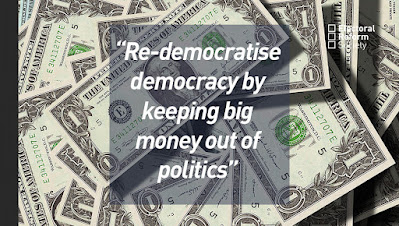Trash Lessons from the Greenest City
 |
| S.F provides residents with green bins for food scrapes |
The city keeps an astonishing 80% of solid waste out of landfills, in part because residents not only use blue bins for their glass, plastic and papers but an additional green bin for all their compostable food waste.
The company Recology manages the city's solid waste and notes that its composting program "takes 650 tons per day of organic matter and turns it into compost that goes to farms, orchards, vineyards and landscaping businesses." The city is aiming to be zero waste by 2020.
More than 90 other cities have followed San Francisco's lead with curbside composting, including Portland, Oregon; Boulder, Colorado; and Seattle. Most recently, city councilors in Boston have been lobbying hard for curbside compost pickup in their city. Currently, Boston residents must turn to the group Bootstrap Compost a residential and commercial food scrap service that collects scraps in five-gallon buckets by bike trailer ($8 per week for residents). Residents receive compost back-up to 15 pounds per year. The remaining compost benefits area farms and community gardens. The operation has diverted more than 170,000 pounds of scraps since launching in 2011.
Food scraps make up the largest percentage of waste in landfills' (followed by plastics at 17% and paper at 16%). The U.S. Environmental Protection Agency (EPA) reports that in 2010, more than 34 million tons of food waste was generated; and only 3% was diverted from landfills. As those food scraps rot in landfills, they release large amount of methane, a greenhouse gas that's 21 times as potent as carbon dioxide. And wasting food, the EPA notes, means wasting the resources that went into making that food another major source of emissions.
Much food that's being tossed is usable and can be donated to food pantries and kitchens. Other food scraps can be composted, or become a form of usable energy through anaerobic digestion. Michigan State University is building an anaerobic digester on campus that will reuse waste from the university's farms and dining halls to make energy. It' s set to be completed this summer. "Once complete, this system will be the largest on a college campus in the United States, said Dana Kirk, a specialist from MSU's Department of Biosystems and Agricultural Engineering who is overseeing the project." It will be the largest in volume and in energy output.
In New York City in February 2013, Mayor Michael Bloomberg announced that a pilot compost collection system would be launched in Staten Island among single-family homes. If the pilot is successful he plans to expand the program elsewhere in the city. New York City's recycling rate is currently around 15%, less than half the national average; a rate Bloomberg has promised to double by 2017.
Major Manhattan real estate company the Durst Organization (whose portfolio includes One World Trade Center and Four Times Square) launched its own composting program in 2012. Food waste is collected from its buildings, sent upstate to be turned into compost, and then used on over an acre of green roofs spread across the company's properties.
It's the kind of integrated green initiative that is par for the course in San Francisco; achieving waste-, energy-, water- and pollution-reduction in one fell swoop.


Comments
Post a Comment